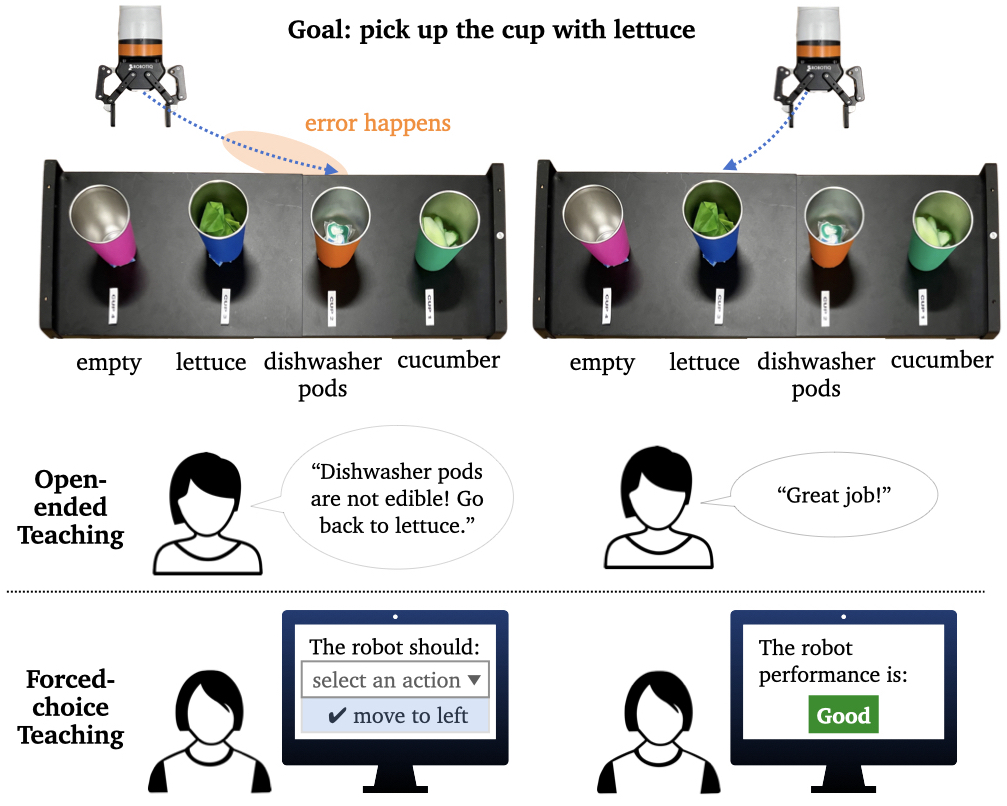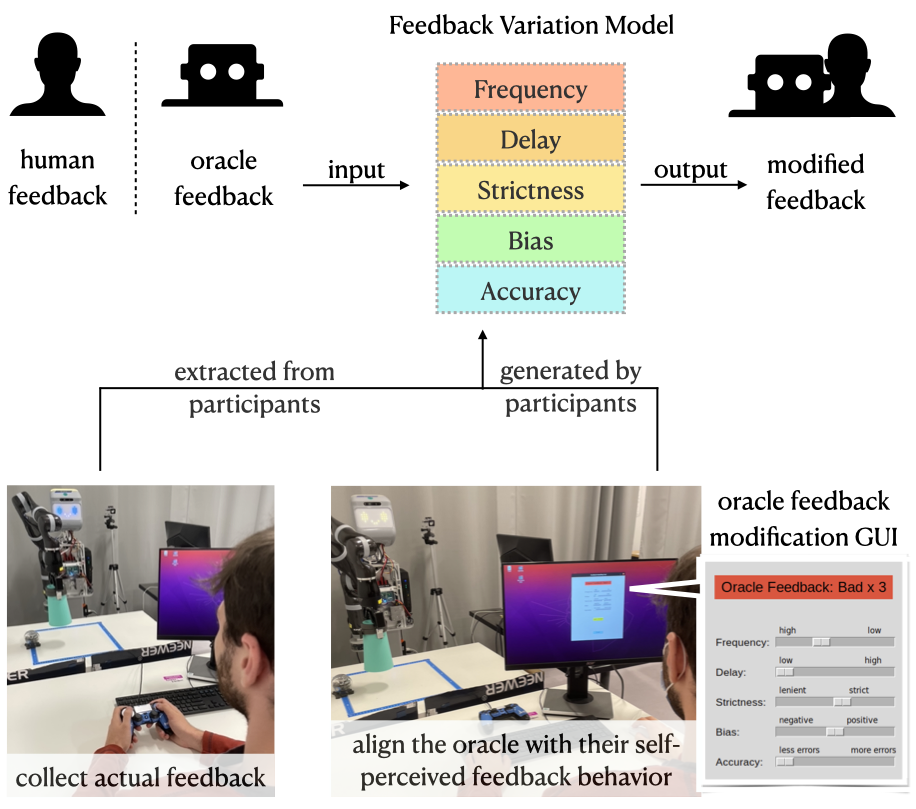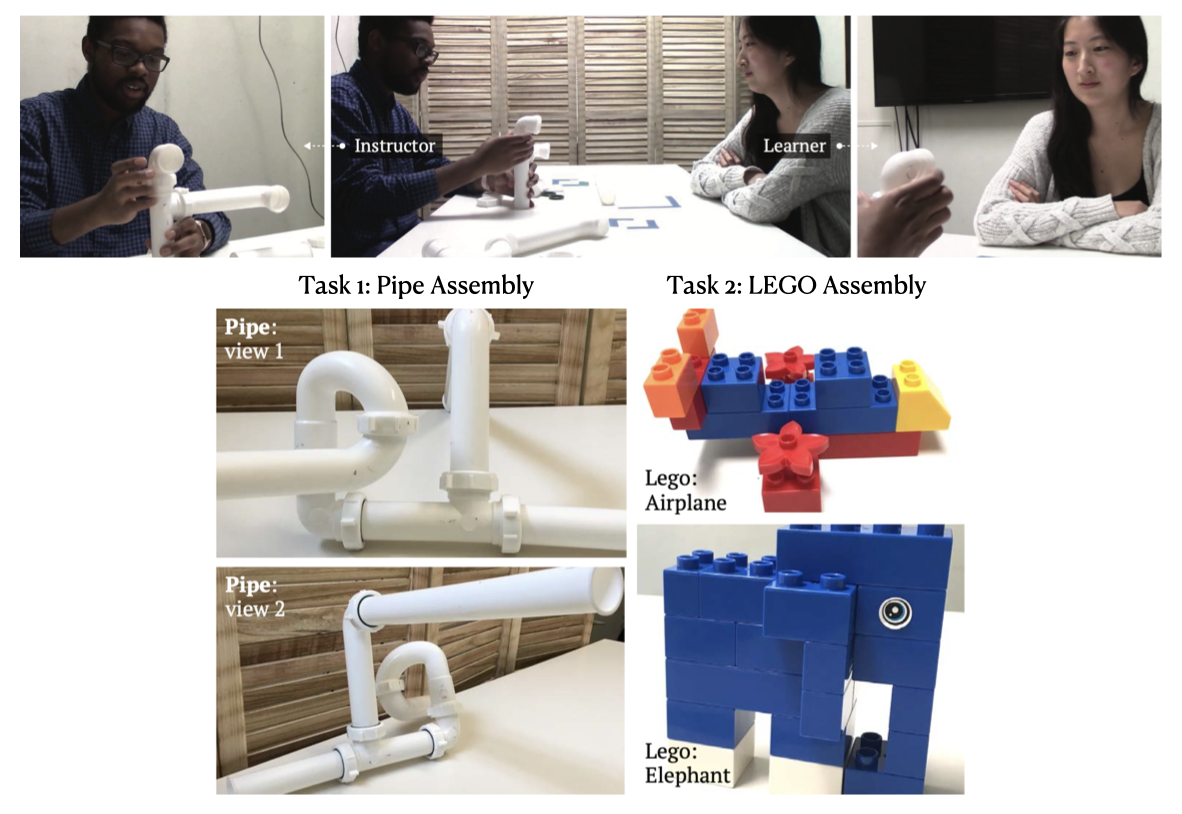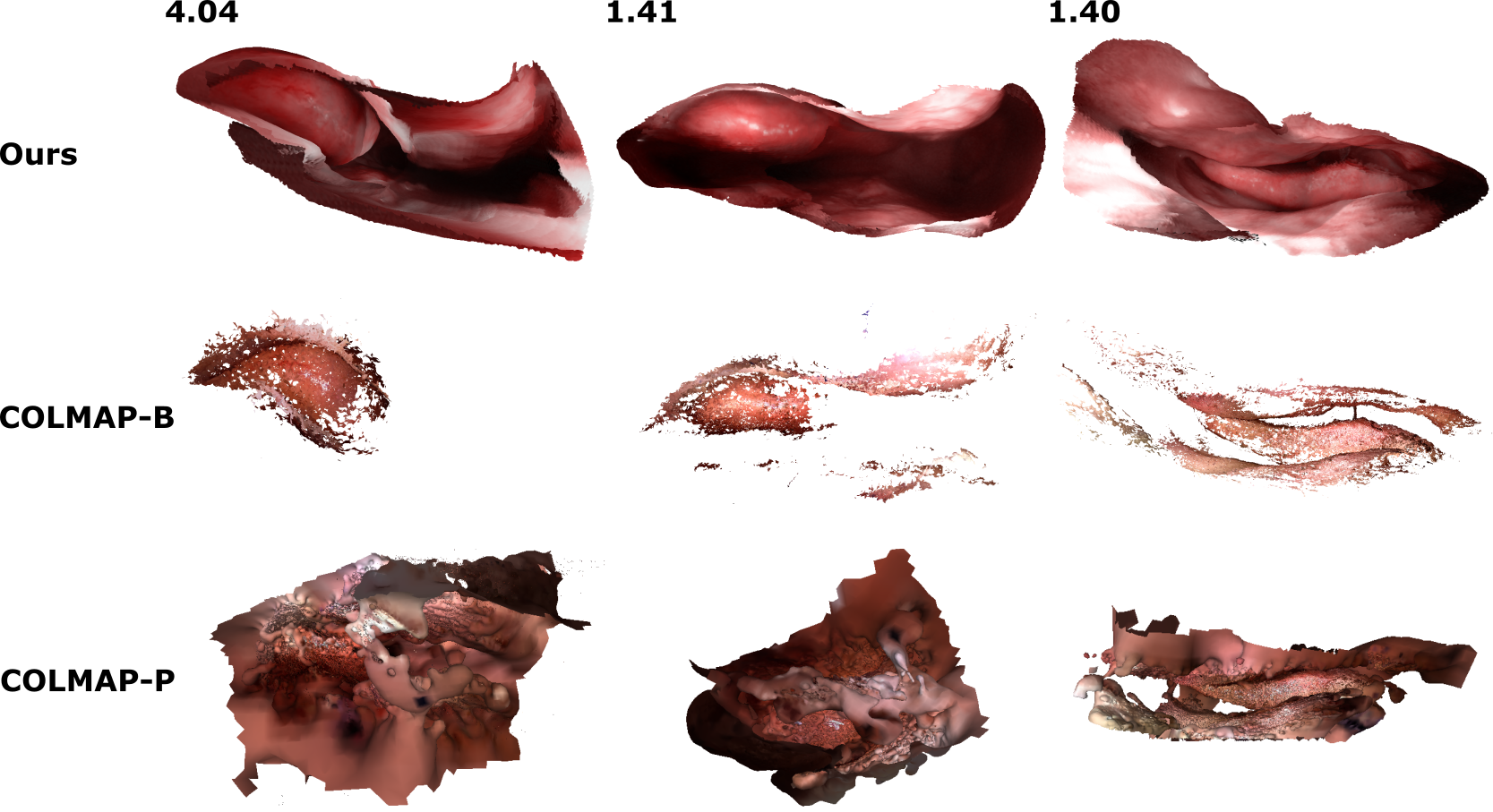
Effect of Robot Errors on Human Teaching Dynamics
Human-in-the-loop learning is gaining popularity, particularly in the field of robotics, because it leverages human knowledge about real-world tasks to facilitate agent learning. When people instruct robots, they naturally adapt their teaching behavior in response to changes in robot performance. While current research predominantly focuses on integrating human teaching dynamics from an algorithmic perspective, understanding these dynamics from a human-centered standpoint is an under-explored, yet fundamental problem. Addressing this issue will enhance both robot learning and user experience. Therefore, this paper explores one potential factor contributing to the dynamic nature of human teaching: robot errors. We conducted a user study to investigate how the presence and severity of robot errors affect three dimensions of human teaching dynamics: feedback granularity, feedback richness, and teaching time, in both forced-choice and open-ended teaching contexts. Our findings offer valuable insights for designing effective interfaces for interactive learning and optimizing algorithms to better understand human intentions. (HAI 2024)

Modeling Variation in Human Feedback with User Inputs
To expedite the development process of interactive reinforcement learning (IntRL) algorithms, prior work often uses perfect oracles as simulated human teachers to furnish feedback signals. These oracles typically derive from ground-truth knowledge or optimal policies, providing dense and error-free feedback to a robot learner without delay. However, this machine-like feedback behavior fails to accurately represent the diverse patterns observed in human feedback, which may lead to unstable or unexpected algorithm performance in real-world human-robot interaction. To alleviate this limitation of oracles in oversimplifying user behavior, we propose a method for modeling variation in human feedback that can be applied to a standard oracle. We present a model with 5 dimensions of feedback variation identified in prior work. This model enables the modification of feedback outputs from perfect oracles to introduce more human-like features. (HRI 2024)

Mental Synchronization in Human Task Demonstration:
Implications for Robot Teaching and Learning
Communication is integral to knowledge transfer in human-human interaction. To inform effective knowledge transfer in human-robot interaction, we conducted an observational study to better understand how people use gaze and other backchannel signals to ground their mutual understanding of task-oriented instruction during learning interactions. Our results highlight qualitative and quantitative differences in how people exhibit and respond to gaze, depending on motivation and instructional context. The findings of this study inform future research that seeks to improve the efficacy and naturalness of robots as they communicate with people as both learners and instructors. (HRI 2021 LBR)

Reconstructing Sinus Anatomy from Endoscopic Video
We present a patient-specific, learning-based method for 3D reconstruction of sinus surface anatomy directly and only from endoscopic videos. We demonstrate the effectiveness and accuracy of our method on in and ex vivo data where we compare to sparse reconstructions from Structure from Motion, dense reconstruction from COLMAP, and ground truth anatomy from CT. Our textured reconstructions are watertight and enable measurement of clinically relevant parameters in good agreement with CT. (MICCAI 2020)




